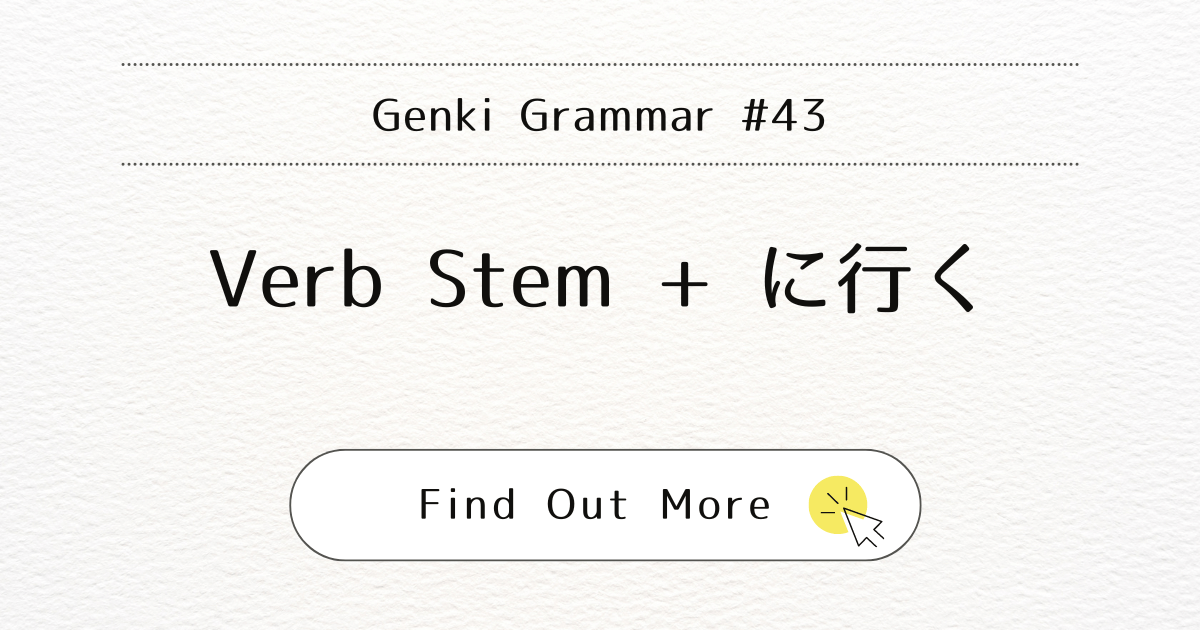
Introduction
In this post, we will learn how to use the structure Verb Stem + に行く to describe a person’s movement to another place with a specific purpose. This structure helps explain the reason behind someone’s movement.
What It Means
When a person moves to another place to do something, you can describe their movement and its purpose using the following structure:
Destination of movement に/へ (ni/e) + purpose of movement に (ni) + 行く (iku) / 来る (kuru) / 帰る (kaeru)
The purpose of movement is expressed with the verb stem, which is the part of the verb you get by removing ます (masu) from its present tense long form.
Verb Stems:
食べます (tabemasu) → 食べ (tabe)
読みます (yomimasu) → 読み (yomi)
Examples
デパートにかばんを買いに行きます。 (Depaato ni kaban o kai ni ikimasu.) – I go to a department store to buy a bag.
マリアさんは日本に日本語を勉強しに来ました。 (Maria-san wa Nihon ni Nihongo o benkyou shi ni kimashita.) – Maria has come to Japan to study Japanese.
Note
You can also use some nouns like 買い物 (かいもの, kaimono) meaning “shopping” for the purpose phrase. For example:
- デパートに買い物に行きます。 (Depaato ni kaimono ni ikimasu.) – I go to a department store for shopping.
- 図書館に勉強に行きました。(Toshokan ni benkyou ni ikimashita.) – I went to a library for studying.
Conclusion
Using Verb Stem + に行く is a useful structure to describe the purpose of someone’s movement in Japanese.



